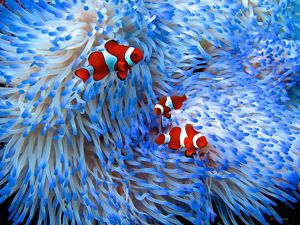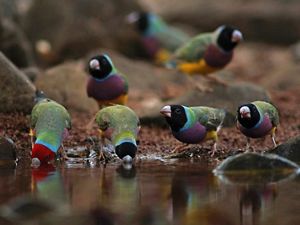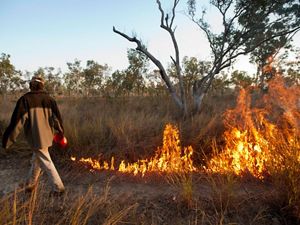
If you’re ever lucky enough to meet a Quokka, chances are you’ll break out in a grin. This popular marsupial is synonymous with Perth’s favourite holiday spot, Rottnest Island – a short ferry ride from the Western Australian port of Fremantle. In fact, it’s how the island got its name – Dutch explorer Willem de Vlamingh named it ‘Rotte Nest’ (‘rats’ nest’) in 1696, mistaking the ubiquitous small macropods (the kangaroo and wallaby family) on the beautiful Mediterranean-like island as giant rats.
Of course the traditional owners of Rottnest Island, the Whadjuk Noongar people, knew of the island long before any European connection. They call it Wadjemup, which means ‘place across the water where the spirits are’.
Rottnest wasn't always an island. Noongar people used to walk there during the last ice age around 6,500 years ago when lower sea levels meant it was connected to the mainland. For them it was an important place to meet and conduct ceremonies.
Around 10,000 Quokkas live on Rottnest Island today. Very small populations also survive in the mainland’s south-west forests such as those near Northcliffe. Overall the species is listed as vulnerable due to predation by feral animals (cats and foxes), altered fire patterns and habitat loss.
Tips for taking Quokka selfies
The Rottnest Island Quokka population has become very accustomed to humans. In recent years in particular, 'Quokka selfies' have become popular with tourists especially since tennis superstar Roger Federer and a Quokka starred in a government advertising campaign for the island, and Australian actor Chris Hemsworth shared his Quokka selfies online.
Here are some tips for taking your own respectful Quokka selfies:
- Be patient - let the Quokkas come to you rather than chase them
- Early morning and early evening are the best times
- Quokkas closest to the settlements are the ones most accustomed to tourists
- Don't touch the Quokkas!
- Never feed the Quokkas or give them a drink - human foods are very bad for their health
Help protect Australia's future
You can help conserve Australia’s natural landscapes & crucial wildlife habitat.
DONATE NOW>>Quokka reproduction
Quokkas give birth just 27 days after mating. The tiny, pink, hairless and blind joey then finds its way to its mother’s pouch where it stays for around six months. If the joey doesn’t survive, the mother can give birth to another one shortly after because she has others in her womb in a suspended state of development as back-up in case tragedy befalls the older joey.
Like many macropods, when threatened, Quokka mothers may expel their joeys from their pouched leaving them squealing on the ground. A chasing predator is attracted by this giving the mother time to get away. It sounds harsh but it’s better than both mother and baby ending up as prey. And it’s another good reason why Quokkas shouldn’t be harassed on Rottnest.
Diet
Quokkas are herbivores that eat a variety of grasses and shrubs. When food is scarce they can draw on stored fat in their tails for energy to get them through. As travellers to the island might know, fresh water is in short supply on Rottnest so it’s just as well that Quokkas can survive on very little of it – lasting up to a month without a drink.

Junk food is bad for Quokkas too
Studies have shown that the Quokkas found close to the human settlements on the east end of Rottnest are the social outcasts of the wild population. Scrounging for junk food high in salt left by island visitors can really dehydrate these individuals worsening their health. So - you guessed it - DON'T FEED THE QUOKKAS!
Wallaby conservation
The Black-flanked Rock-wallaby is an endangered species once widespread across many parts of Western Australia, South Australia and the Northern Territory. The clearing of its habitat, changes to fire patterns and, most devastating of all, introduced foxes and cats, all threaten its continued existence. It only survives today in small isolated populations within its former range.
The Nature Conservancy has proudly been a part of an ambitious rock-wallaby translocation project on Martu Country, Western Australia.
Watch this video about the wallaby rescue project
Learn about our conservation work in Australia
Find out how we're helping to conserve Australia's iconic natural landscapes and crucial wildlife habitats.



